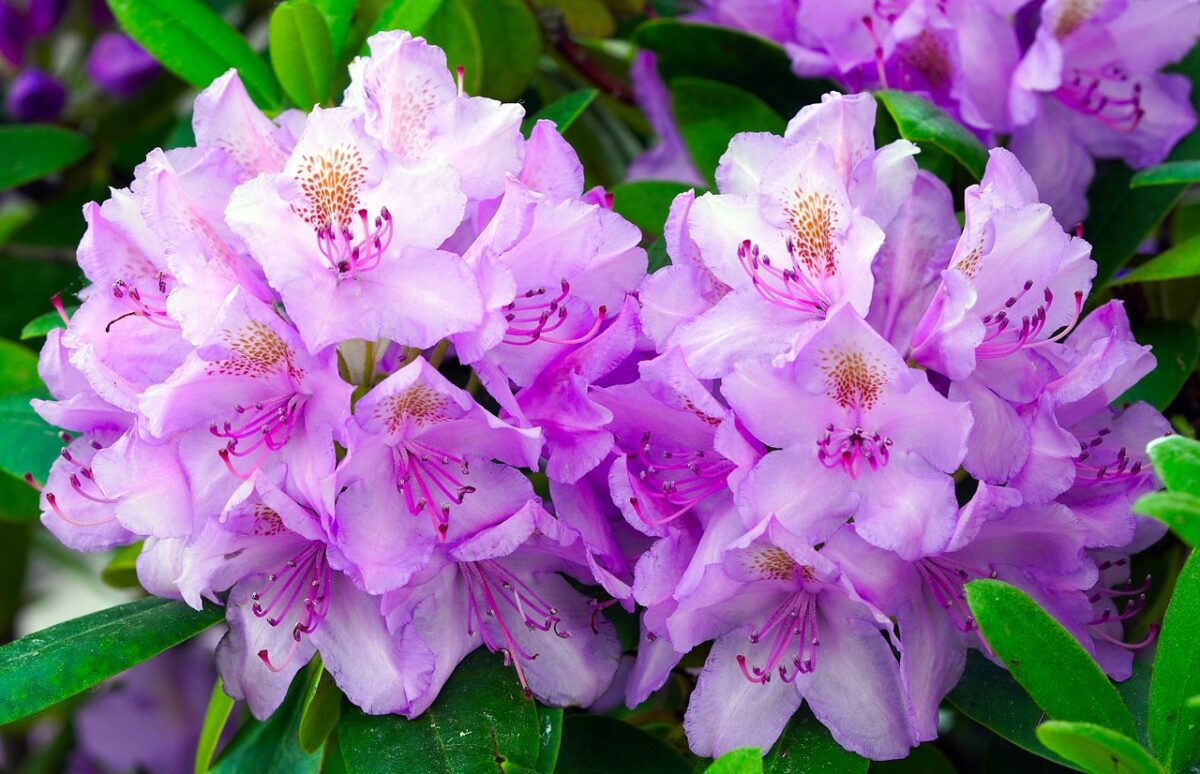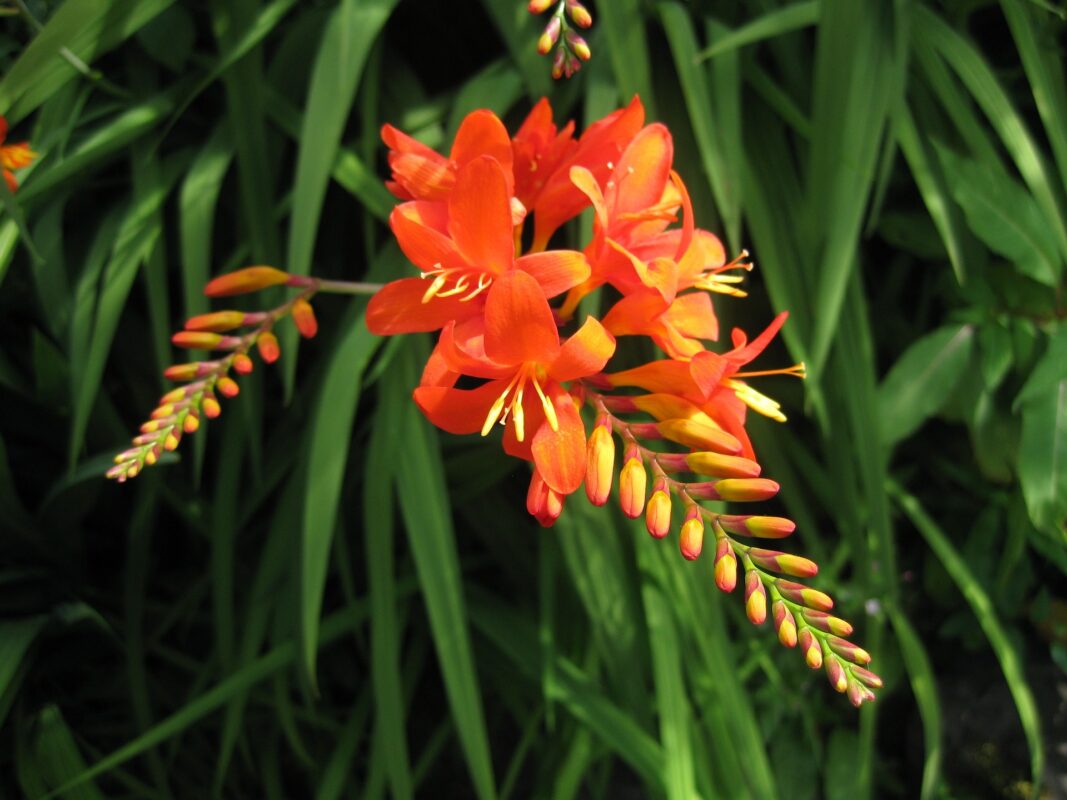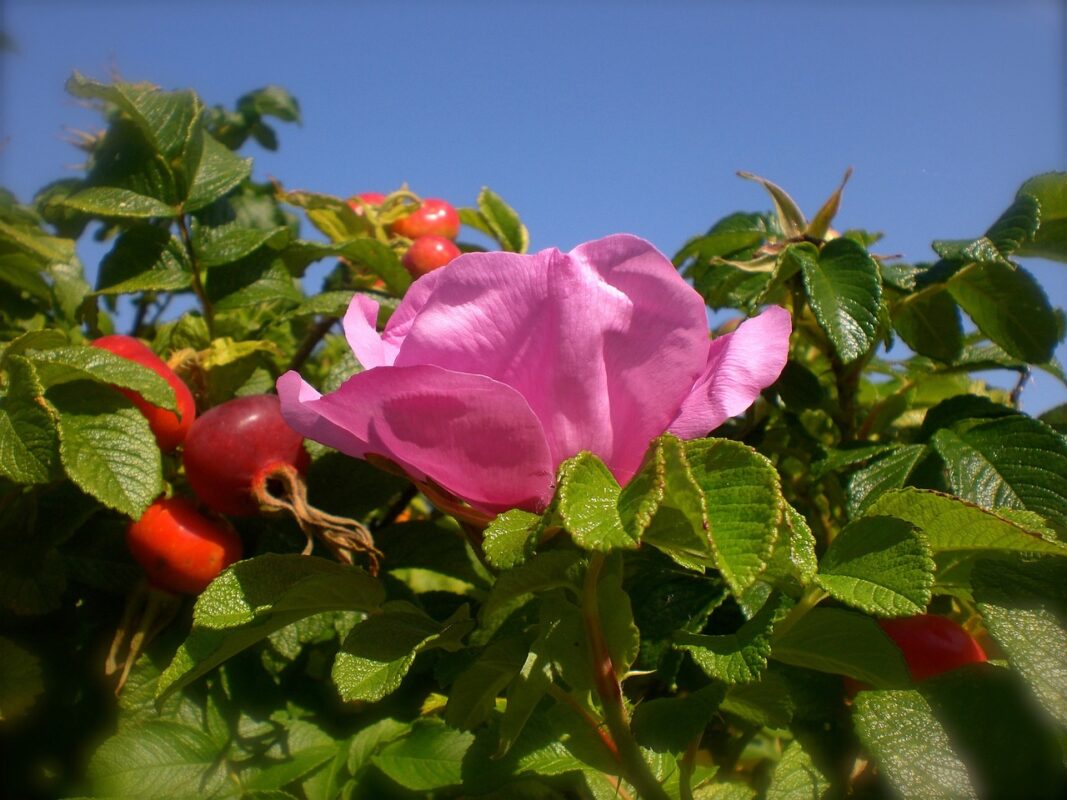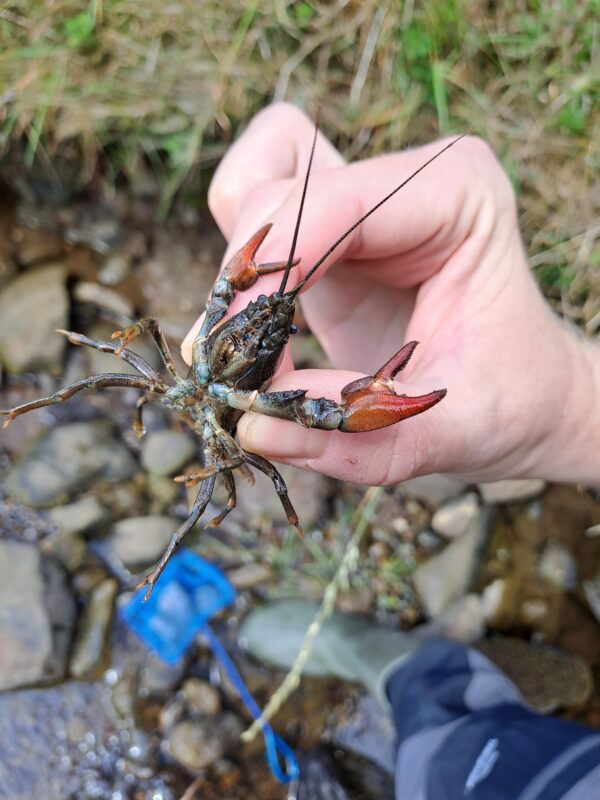
Britain has seen the introduction of over 2,000 species of plants and animals from various parts of the globe. While many of these non-native species coexist harmlessly, approximately 10-15% have become invasive, posing significant threats to the environment, economy, and even human health.
While you may be familiar with notorious invaders such as giant hogweed, Himalayan balsam, and Japanese knotweed (the latter alone costing the British economy an estimated £166 million annually), we’ll also shine the spotlight on ornamental species which are often overlooked within the UK. Many of these ornamentals adorn private gardens, grounds, and national parks, yet their potential dangers to biodiversity and adjacent native habitats often go unnoticed until they grow unchecked.
The Rhododendron is a species familiar to many, and one that is often found in national parks and private gardens alike. Prized for its colourful blooms, this plant has become a notorious invasive species, particularly in regions with acidic soil and ample rainfall. It has allelopathic properties, which means that it is capable of producing biochemical compounds that inhibit the germination, growth, and reproduction of competing plant species. These properties give the Rhododendron a competitive advantage that enable it to aggressively colonise habitats and form dense thickets that choke out native flora, disrupting ecosystems.
Eradicating rhododendron requires a multifaceted approach, often involving mechanical removal, herbicide application, or controlled burning (care must be taken however, as burning releases toxic a compound called Grayanotoxin into the environment). Implementing proper disposal methods such as chipping or composting helps to minimise these risks. Additionally, stringent monitoring and prompt action are crucial to containing the spread and safeguarding vulnerable ecosystems from its invasive impacts.



Originating from Africa, Montbretia, (Crocosmia x crocosmiiflora), is an extremely popular garden plant, widely grown for its attractive red/orange flowers and distinctive shape. It has gained notoriety as an invasive species due to its rapid spread, aggressive growth habits and tolerance of temperature variations. It quickly establishes dense stands in a variety of habitats, including roadsides, cliff tops, woodland areas, and disturbed areas on waste ground where garden plants are discarded.
Although Montbretia presents no physical danger to either humans or animals, its prolific seed production and rapid growth via underground rhizomes (Corms) enable it to outcompete native vegetation, leading to reduced biodiversity, habitat degradation and a disruption of native ecosystems. Effective control measures include manual removal, herbicide application, and targeted grazing strategies. However, for effective and permanent eradication, all fragments of the rhizomes need to be completely removed, which can prove problematic, even for professionals.



Originating from East Asia, and favoured for its attractive flowers and hardiness, the Japanese rose (Rosa rugosa) was introduced to Europe in the 18th century as an ornamental plant. It is now classified as an invasive species due to its prolific reproduction through seeds, aggressive growth habit via root borne suckers, and ability to displace and outcompete native plants. Seed dispersal via birds and mammals utilising the rose hips as a food source can lead to Japanese rose colonising new areas. Remarkably, the rose hips can float for weeks in both freshwater and seawater, remaining viable even after prolonged exposure to inhospitable conditions.
The danger posed by Japanese rose extends beyond ecological impacts. It grows vigorously in extensive and dense thickets, which can impede access to recreational areas, hinder agricultural practices, and alter the formation of landscapes, particularly sand dunes.
Effective eradication methods include mechanical removal, herbicide application, and targeted livestock grazing. Preventative control measures, such as early detection and prompt removal of new growth, are essential for containing its spread. Collaborative efforts, involving community engagement and invasive species management programs, are crucial to mitigating the detrimental effects of the Japanese rose on biodiversity and ecosystem health.



Originally native to North America, the Signal crayfish was introduced to Europe in the 1960s with the intention of bolstering European fisheries that were suffering from crayfish plague. However, the imported crayfish were inadvertently found to be carriers of the very disease they were meant to combat. Furthermore, these North American invaders are more aggressive and reproduce faster than their European counterparts, leading to rapid proliferation in many regions. As a result, they outcompete native species for resources, particularly impacting the more docile, white-clawed crayfish native to Britain.
Today, the Signal crayfish stands as the most prevalent non-native crayfish species in Europe. This combination of displacement and disease transmission has precipitated sharp declines in native crayfish populations, significantly impairing biodiversity in affected waterways. In addition to their rapid spread, Signal crayfish pose a heightened threat due to their aggressive behaviour. Their destructive nature extends beyond disrupting aquatic food chains; they also wreak havoc on habitats by burrowing into riverbanks, leading to erosion and destabilisation (avid Clarkson’s Farm followers will have seen this issue being discussed!) along with displacing native fauna like water voles.
Various strategies have been employed to control Signal crayfish populations, including trapping, waterbody drainage, construction of artificial barriers, introduction of natural predators and application of pheromones, but as each method carries its own advantages and disadvantages, none has yet proved entirely successful. Remember to have biosecurity in mind if or when you encounter any INNS species.



Should you require any further information on TEP’s services associated with invasive species, or wider land management issues, please contact LMQuotes@tep.uk.com and one of the team will be able to help with your enquiry.
For further information on invasive species and TEP’s services please click here.








